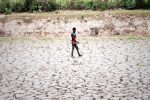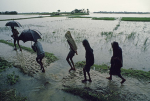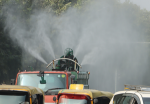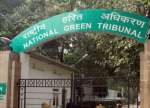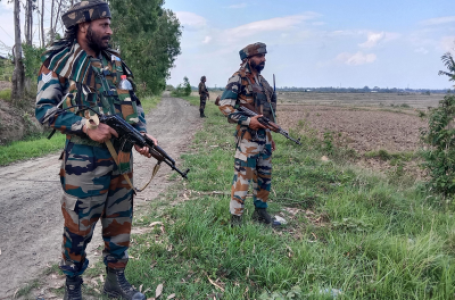
Last October, the amount of rain received in Delhi was the highest in 120 years. This year too it saw huge rainfall, eight times more than normal, in the first half of October. And this is not true only about Delhi or the northernmost part of the country; this is the new pattern emerging all over entire North India.
The new pattern is characterized by a slightly delayed onset of the monsoon, its longer stay, and heavy rainfall during the last weeks. In 2019, India Meteorological Department (IMD) had acknowledged these changes officially by changing the withdrawal dates for North, Northwest and Central India by pushing it back by one to two weeks.
This is an impact of climate change, and it was coming, slowly but inevitably, for decades. The world has now woken up to the dangers, and has decided to fight global warming by containing the rise of earth temperature within 1.5 or 2 degrees of pre-industrialised days. But the damage already done has thrown up huge challenges for India.
Such changes of dates of onset and withdrawal of monsoon are just not statistical exercises. The monsoon has a profound impact on the lives of the people. The main challenge is adapting the crop patterns to it, and some corollaries are dam management, electricity production management, new patterns of silt formation, and so on, ultimately impacting the economy as a whole.
The complication goes further if we check an astounding fact. Though extreme heavy rainfall events were witnessed in recent years, according to Indian government and international climate experts the actual rainfall during the monsoon has gone down by 6 percent in the last 60 years.
Not only that, the regular pattern gradually being experienced is a drier August and wetter October. So we have three components of change: monsoon duration increasing, month-wise rainfall pattern changing, and having less rainfall than half a century ago.
As far as agriculture is concerned the preferred time of sowing of crops is the primary challenge, but it widens to cover the entire cropping cycle. The agriculturists, though they know it instinctively, must be briefed about the implication of the whole thing to enable them to adapt to it. That itself is a huge challenge for the authorities, but the story does not end there.
What entails a more profound challenge is the choice of the crop. A crop is not only a function of rainfall and moisture content, but also of temperature. If one part of the set changes while the other remains constant, production of crops, and more importantly the productivity, will be impacted.
The next critical factor is the release of water from the reservoirs of the dams for irrigation. The dam authorities are following the old pattern, and if it is not changed immediately it will hamper irrigational networks. Again, the quantum of production of electricity is also seasonal, and needs to be adjusted with the new situation.
The monsoon is also about the low pressure and depressions in the seas, mainly the Bay of Bengal. A shift in the track of these monsoon systems creates flash floods and erratic nature patterns, and often extreme weather conditions in quick succession. It not only impacts the rural areas, but also the urban areas, particularly cities like Mumbai.
These all are definitely related to climate change, and a lot needs to be done by the government, the industries and the people for prevention and adaptation. However, the level of awareness of the industry and the people in India is still low. While the industry can be forced to become aware by imposing a carbon tax regime now being contemplated by the union government, there is no coordinated effort to make the people aware.
Indian experience of rainfall increasingly occurring in short, intense bursts is matching with the experience of many other parts of the world. Extreme rainfall events are increasing both in intensity and frequency.
The experts say one of the possible reasons for the spillover of monsoon rainfall to October could be the fact that the oceans that help formation of monsoon winds have become warmer. Consequently the rainfall is failing to make the oceans cool by the end of September, and cloud formation continues till mid-October.
It all only displays the quantum of challenge we face now, in 2022, and the situation will only worsen in the coming years. The question is whether the government, the media and the conscious circles will come forward to communicate and educate the ignorant masses, for without such communication all efforts will come to naught, as exemplified by Australian experience where the government was forced to withdraw the carbon tax three years after its introduction.




